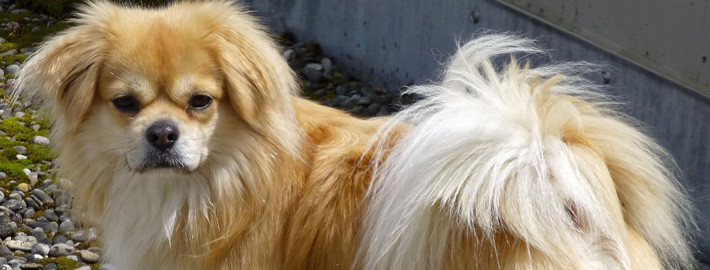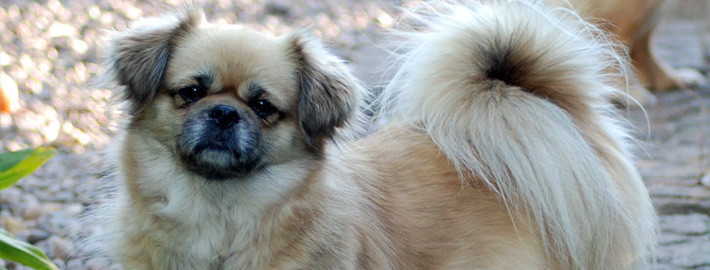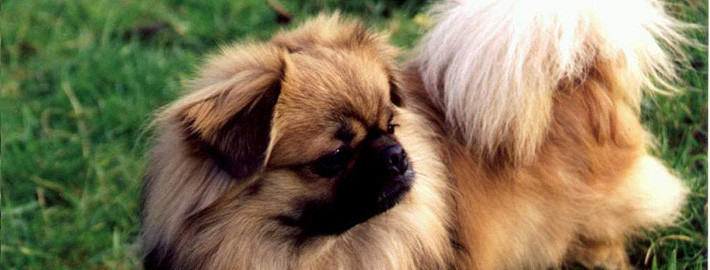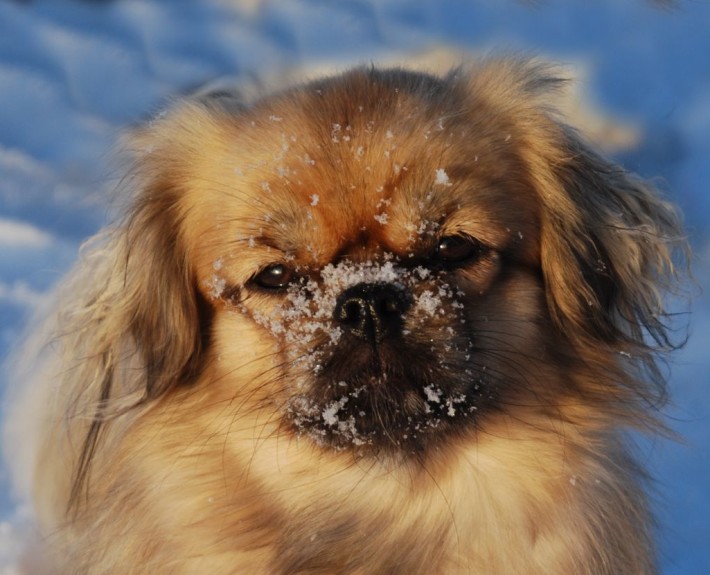What makes the Tibetan Spaniel Unique?
This regal non-sporting breed is native to Tibet, a region in China. Originally, these tiny dogs were the property of monks but they have since become a familiar sight in households throughout the world.
Breed Groups
Page Contents

Is the Tibetan Spaniel Right For You?
This tidy breed makes a wonderful house pet as they also have a quite calm disposition. They are also excellent companions. Tibetan Spaniels are great family dogs because they take pleasure in going on excursions and playing games with their human owners. In fact, this breed thrives on human interaction and will adapt their behavior to suit the situation at hand. In addition, they can be quite playful at times.
A few times per week, a Tibetan Spaniel should have its thick coat brushed and their ears combed. More frequent grooming will be needed during the two periods per year when their fur falls out in large clumps. Owners will need to exercise patience in this matter and remain consistent in their training methods. Tibetan Spaniels are sensitive dogs that respond badly to harsh disciplinary measures.
In 5 Words
- Aloof
- Intelligent
- Willful
- Happy
- Assertive
Characteristics
Learn About the Tibetan Spaniel
Description
General Description
These dogs were thought to resemble lions, a sacred symbol to some Buddhists, and that fact alone has reinforced their use as monetary guardians. Although the Tibetan Spaniel shares more similar characteristic with Pekingese dogs than lions, there are subtle differences. The former dog breed has lacks the more lavish coat and extra skin about its eyes that Pekingese dogs do. Tibetan Spaniels also have somewhat lengthier faces. These dogs are longer than they are tall. They have wide set eyes, small heads, and level or undershot bites. Black noses and dark brown eyes are another feature of this breed. While the dewclaws are sometime left on the dogs, they may also be removed. Tibetan Spaniels have rabbit like feet at the ends of their slightly bowed legs. However, they move at a rapid, straight pace with their plumed tails carried high over their backs.
Size
Both males and females of this breed stand between 9 and 10 inches in height. All Tibetan Spaniel should measure between 9 and 15 pounds.
Coat
These dogs have a double coat with a long mane that is particularly pronounced in male dogs. The silky outer layer is of medium length and lies flat. The fur on their faces and front of their legs is short and smooth in texture. Feathering is found on the back of their legs and on their toes. A variety of colors and mixes are available with this breed but golden colorations are the most common. Fawn, red, black and tan, black, cream, and white coats are also seen in Tibetan Spaniels. White markings on the feet are common as well.
Short History of the Tibetan
Originally, the Tibetan Spaniels fulfilled a dual role in monasteries as both companions and guard dogs. It is also thought that these small creatures were also trained to spin the prayer wheels that have been prevalent in Buddhism for centuries. Although it is unknown how old the breed truly is, historical artifacts have led to the theory that these dogs have been in existence for over a thousand years.
Tibetan Spaniels were often given as gifts to member of the nobility and the grateful nobles would send some of their dogs back to the monks. This led to some crossbreeding between the Tibetan monks’ dogs and other popular Oriental varieties. However, peasants would often donate their smallest dog specimens to nearby monasteries, which led to further crosses. As the American Kennel Club’s website states, “[This breed] was considered a very useful animal by all classes of Tibetans.”
Although these dogs were depicted in European artwork from earlier periods, the breed certainly had made its way from its homeland to England by the late 1890s and American by the late 1960s. Tibetan Spaniels were eventually recognized by the American Kennel Club in 1983.
Temperament
Although these dogs are known for their independent natures, they are also reasonably obedient and sweet tempered. This tidy breed makes a wonderful house pet as they also have a quite calm disposition. They are also excellent companions. Tibetan Spaniels are great family dogs because they take pleasure in going on excursions and playing games with their human owners. In fact, this breed thrives on human interaction and will adapt their behavior to suit the situation at hand. In addition, they can be quite playful at times. Tibetan Spaniels get along well with fellow canines as well as other pets. However, these dogs are usually reserved around unfamiliar people. This tendency often resembles aloofness rather than becoming a cause for aggression towards strangers. As they were breed to keep an eye on their surroundings, these dogs have a habit of climbing onto high surfaces like windowsills to survey their perceived domain.
Caring for Your Tibetan Spaniel
General Health
In general, the Tibetan Spaniel is a very healthy breed and does not contract illness or disease as some breeds tend to do. When properly cared for the breed will remain healthy for years.
Of the more common afflictions that all breeds are susceptible to the Tibetan Spaniel may contract:
*Progressive Retinal Atrophy
*Juvenile Kidney Disease
*patellar luxation
*hip dysplasia
Grooming & Bathing
A few times per week, a Tibetan Spaniel should have its thick coat brushed and their ears combed. More frequent grooming will be needed during the two periods per year when their fur falls out in large clumps.
Exercise & Training
Due to their somewhat stubborn dispositions, this intelligent breed is not one of the easiest to train. Owners will need to exercise patience in this matter and remain consistent in their training methods. Tibetan Spaniels are sensitive dogs that respond badly to harsh disciplinary measures. Owners should also refrain from allowing their Tibetan Spaniels to become spoiled as this will cause problems later on. However, members of this breed will need to begin obedience training as soon as possible. As a result of their fastidious natures, these dogs prove quite easy to housetrain and this trait alone makes them suitable for apartments but their small stature is likewise another selling point.











